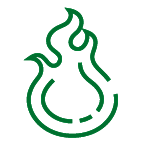Welcome to the Safety & Risk Services Resource Hub. The Safety & Risk Services team provides trainings, videos, maps, and other resources to raise awareness, increase resilience, and improve safety at the University of Oregon.
Below you will find information on occupational health and safety topics, lab safety, risk management, emergency preparedness, and personal safety.
Request a Training
Requests for training for departments, schools, colleges, or student groups are welcome. The team supports university activities and all efforts are made to accommodate training needs and requests. Types of trainings which can be requested are Emergency Preparedness, De-Escalation, Active Threat, and Personal Safety.
UO students, faculty, staff, and departments can also request a risk consultation or training session related to insurance and risk management.
Request a Risk Management Consultation
Learn about additional trainings related to Lab Safety, Occupational Safety, or Risk Management.
Upcoming Trainings
UOPD
Hosted by UOPD the basic self defense and pepper spray classes are available for free to all students, employees, and community members. Registration is not needed. It is highly recommended that people who carry pepper spray take both.

The Basic Self Defense class is 90 minutes long and incorporates risk awareness discussion with simple physical self-defense techniques.

The Pepper Spray class is one hour and focuses on when and how to deploy pepper spray, and what type of pepper spray works best.
Occupational Health and Safety

The University of Oregon has many spaces that are classified as Confined Spaces. These areas require specific safety training prior to entry. This course will cover entry requirements for permit required and non-permit required confined spaces. After successful completion of the course, employee will be qualified to enter a confined space or act as an attendant to a permit required confined space.
Hazards are dangerous activities or environmental factors in the workplace that could potentially lead to ill health effects, injury, or even death. Not as common, imminent danger is a hazard that could immediately result in severe physical harm or loss of life. The University consists of numerous workplaces with different and evolving hazards.
Lab Safety and Hazardous Waste
Lab Safety and Hazardous Waste Management and Fire Protection in Labs trainings are required for anyone working in, volunteering in, or using a UO laboratory. These courses are open to UO employees, students, volunteers, visiting scholars, Innovation Center tenants, and anyone else using UO lab facilities.
Anyone unable to access MyTrack or attend an in-person Lab Safety training if offered, should reach out to EHS for an alternative format.

This one-hour in-person refresher training is required annually.

This two-hour in-person course is taught by EHS staff and should be taken prior to beginning lab work, or as soon as possible after joining a lab.

This online training covers lab fire protection systems, fire extinguishers, fire safety best practices, and expectations for response should a fire occur.
Featured Safety Sheets
Safety & Risk Services has developed a series of safety sheets to provide UO employees with information on specific hazards, environmental health issues, and best practices. Find an A-Z list of downloadable safety sheets in English or Spanish.
Safety Maps
Visit the campus map to navigate campus and view additional safety maps.
